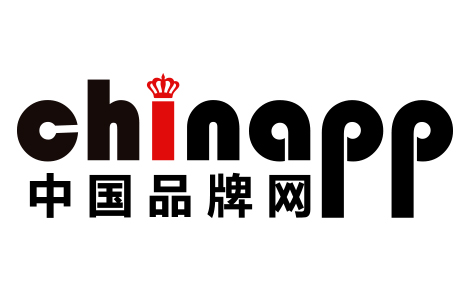夏普太阳能品牌怎么样 申请店铺
外推网助力夏普太阳能品牌出海!将品牌入驻外推网,定制夏普太阳能品牌推广信息,可以显著提高夏普太阳能产品曝光,简直是跨境电商爆单神器!目前仅需1000元/年哦~

夏普的信誉建立在其漫长的太阳能开发历史之上
从1959年起,夏普在研究和开发上的努力使得太阳能解决方案横空问世。其中一个杰出的示例是开发为日本国家项目中的卫星供电的太阳能电池。作为消能产品的制造商,我们始终认为我们也应该创造能源。我们的Eco-Positive(生态环保)使命的一切都是为了照亮世界人民的生活。
2011,意大利最大的光伏板制造厂盛大开业;夏普在亚洲启动太阳能维护业务
2010,夏普签署协议帮助建立世界上最大的太阳能发电厂之一;装备夏普太阳能电池的东海大学太阳能汽车在南非共和国的汽车大赛中连续两次胜出
2009,提供用于移动设备的新太阳能模块;三重结合复合太阳能电池实现35.8%转换效率;特内里费岛建立工业兆瓦级太阳能发电厂;配备夏普太阳能电池的东海大学太阳能汽车在全球绿色汽车挑战赛中胜出
2008,世界上率先达到2GW太阳能电池累计产量;淀屋桥重建大厦装上带内置LED的薄膜太阳能电池的“Lumiwall”;通过水平部署用于TFTLCD的薄膜技术达到年生产能力1GW规模;实现多晶体光电模块的行业内最高*转换效率-14.4%
2007,成立富山工厂,开始制造用于太阳能电池的硅;开发大规模生产三重结合薄膜太阳能电池取得成功;21世纪的制造集团公司破土动工仪式;荣获日本第4届环保产品奖优秀奖;在欧洲的光电模块生产能力扩大到220MW
2006;葛城工厂将其太阳能电池年生产能力扩大到当时世界最高的600MW;在龟山工厂实现世界上最最具环保意识的生产协议
2005;开发吸收光线并可用作窗户建筑材料的太阳能电池;开始大规模生产薄膜太阳能电池;开始大规模生产串叠型薄膜太阳能电池;太阳能板覆盖曼彻斯特摩天大楼的墙壁
2004,在机场配送物流集散中心安装美国最大规模的公司太阳能电池;推出将太阳能电池与LED相结合的“照明太阳能电池”;成立太阳能学会
2003,在卫星观测站“自由飞行物”(SFU)上安装太空光电模块;独立发电系统即使在蒙古沙漠地区也能够稳定运行;开始在美国生产光电模块;开始在欧洲生产光电模块;推出可以安装在最小区域中的3kW系统光电模块
2002,开发行业第一款组串式电源调节器
2001,适合居民四坡屋顶的系统实现商业化;获得光电模块的海外安全标准证书-UL(美国)和TUV(欧盟)
2000,世界领先的太阳能电池/模块制造商;在行业内率先将提高可安装性的多电源调节器商业化。
1999,荣获日本新能源奖和通产省奖
1998,全球首个具有融雪功能的200kW系统(日本最大的系统之一)
1994,居民太阳能系统(电网连接)实现商业化
1992,实现多晶体太阳能电池的世界最高电池转换效率-17.1%;可大规模生产的单晶体类型太阳能电池实现世界最高电池转换效率-22%
1988,大分海洋牧场系统采用光电模块;非晶硅太阳能电池的电池转换效率达到11.5%
1983,使用卷对卷方法生产双层叠装式太阳能电池
1981,新庄工厂(现为葛城工厂)开始运营。
1976,成功发射装有夏普太阳能电池的运营卫星“梅花”;推出第一款使用太阳能电池的计算器。
1967,开始开发太空太阳能电池
1966,长崎县大神岛灯塔安装太阳能电池;这些太阳能电池的功率为225W,具有当时世界上最大的太阳能功率输出。
1963,大规模生产太阳能电池取得成功;横滨湾鹤见航线投放发光浮标-世界上第一款配有太阳能电池的浮标。
1961年,使用太阳能电池的原型晶体管收音机成功问世并推出。
1959,开始开发太阳能电池
Sharp's reputation is based on its long history of solar energy development. Since 1959, sharp's efforts in research and development have led to the emergence of solar solutions. One outstanding example is the development of solar cells to power satellites in Japan's national project. As a manufacturer of energy dissipation products, we always believe that we should also create energy. All of our eco positive mission is to illuminate the lives of people around the world. In 2011, Italy's largest photovoltaic panel manufacturing plant opened in a grand way; sharp started its solar energy maintenance business in Asia in 2010, and sharp signed an agreement to help build one of the world's largest solar power plants; Donghai University solar car equipped with sharp solar cells won the car competition in the Republic of South Africa for two consecutive times in 2009, providing new solar modules for mobile devices; Triple combination of composite solar cells to achieve 35.8% conversion efficiency; establishment of industrial megawatt level solar power plant in Tenerife island; Donghai University solar car equipped with sharp solar cells won the global green car challenge in 2008, taking the lead in the world to achieve the cumulative output of 2gw solar cells; the "lumiwal" with built-in LED thin-film solar cells installed in dianwuqiao reconstruction building L); the annual production capacity of the thin film technology for TFTLCD is 1GW through horizontal deployment; the industry's highest * conversion efficiency of polycrystalline photovoltaic modules is - 14.4% in 2007, Fushan plant is established to start manufacturing silicon for solar cells; the development of large-scale production of triple combined thin film solar cells has been successful; the ground breaking ceremony of the 21st century manufacturing group company; the award date Excellent award of the 4th environmental protection product award; the production capacity of photovoltaic modules in Europe was expanded to 220mw2006; Gecheng plant expanded its annual production capacity of solar cells to the world's highest 600MW at that time; the most environmentally conscious production agreement in the world was achieved in Guishan plant 2005; solar cells that absorb light and can be used as window building materials were developed; large-scale production of thin films was started Solar cells; start mass production of cascade thin film solar cells; solar panels cover the walls of skyscrapers in Manchester 2004, install the largest corporate solar cells in the United States in the airport distribution and logistics distribution center; launch the "lighting solar cells" combining solar cells with LED; establish the solar society 2003, and "free flight" in the satellite observation station Space optoelectronic module is installed on SFU; independent power generation system can operate stably even in the desert of Mongolia; optoelectronic module is started to be produced in the United States; optoelectronic module is started to be produced in Europe; 3KW system optoelectronic module 2002 which can be installed in the smallest area is launched; the first series power regulator 2001 in the industry is developed, which is suitable for commercialization of the system of residential four slope roof It has obtained the overseas safety standard certificate of photoelectric module - UL (USA) and TUV (EU) 2000, the world's leading solar cell / module manufacturer; it is the first in the industry to commercialize the multi power regulator to improve the installability. In 1999, it won the Japanese New Energy Award and the general industry provincial award in 1998. In 1994, the world's first 200kW system with snow melting function (one of the largest systems in Japan), the residential solar system (grid connection) realized commercialization in 1992, and the world's highest battery conversion efficiency of polycrystalline solar cells was - 17.1%; the world's highest battery conversion efficiency was achieved by the large-scale production of single crystal solar cells The conversion efficiency was - 22% in 1988, and the photovoltaic module was used in the ocean ranch system; the conversion efficiency of amorphous silicon solar cells reached 11.5% in 1983. The double-layer stacked solar cells were produced by roll to roll method in 1981, and Xinzhuang factory (now Gecheng factory) began to operate. In 1976, Meihua, an operating satellite with sharp solar cells, was successfully launched, and the first calculator using solar cells was launched. In 1967, the development of space solar cells was started. In 1966, the Lighthouse of Dashen island in Nagasaki county was installed with solar cells. The power of these solar cells was 225W, with the largest solar power output in the world at that time. In 1963, the large-scale production of solar cells was successful; the first buoy equipped with solar cells in the world was launched on the Hengbin Bay Hejian route. In 1961, a prototype transistor radio using solar cells was successfully launched. 1959, start to develop solar cells
本文链接: https://brand.waitui.com/f625c88f5.html 联系电话:请联系客服添加 联系邮箱:请联系客服添加


















 浙公网安备 33011802001999号
浙公网安备 33011802001999号
